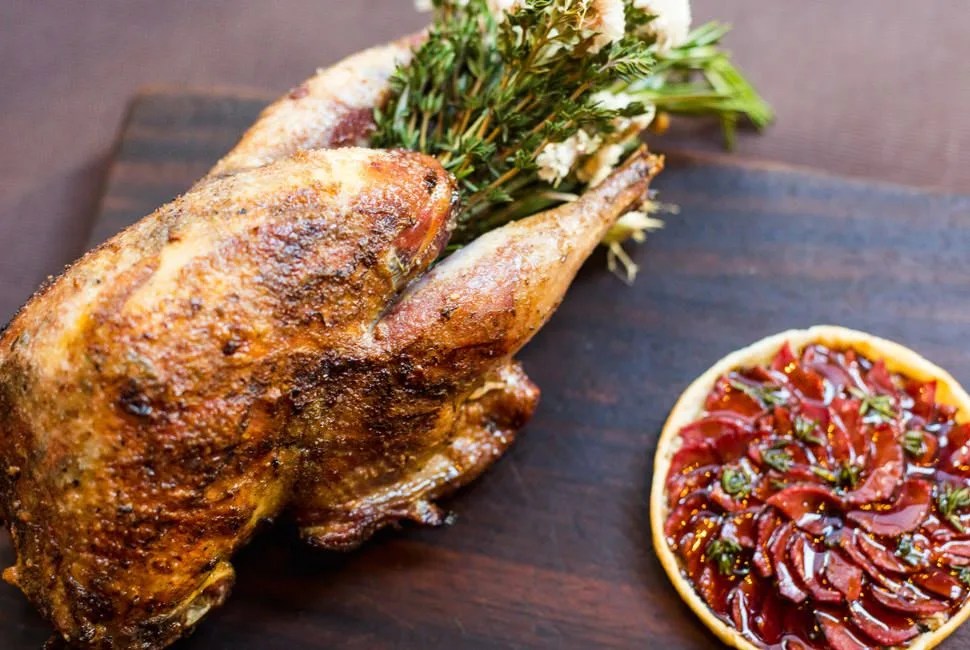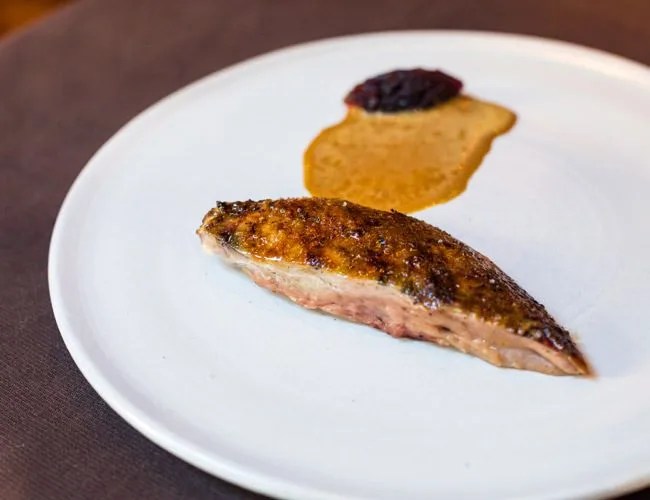When King George V of England shot over a thousand pheasants on the 18th of December, 1913, he didn’t wear a fluorescent orange mesh over his stately robes, and he probably had at least one dog in his employ. The modern-day hunter is more conscientious of overkill and environmental impact, and shotguns have been improved over time; still, dogs are as useful in the field as they have been since the 1500s, and properly prepared pheasant is every bit as rewardingly delicious today as it was when hunting involved a bugle. Likewise, cooking a bird over a flame (albeit a charcoal one) hasn’t changed a lick. But when it comes to preparing said bird, the culinary sciences have taken pheasant from peasant food to royal status and back again.

The 39-person kitchen staff at Betony, a Michelin Star-rated restaurant in the center of Manhattan, is about as close as most will come to a royal kitchen, and in November, the restaurant began offering game birds. “It’s the perfect season to be doing this kind of thing”, according to Jack Logue, the executive sous chef at Betony who cooked up the decadent bird seen here. Head chef Bryce Shuman inaugurated their game offerings with squab, but their pheasant is unique: “It’s our first foray into aging the birds ourselves and sourcing a properly hunted bird”, says Logue.
Betony’s pheasants are hunted in estates across England and plucked in Maldon, Essex. “They’re coming from one of the most famous licensed game purveyors from Scotland, Ben Rigby”, says Bryce Shuman, head chef. “They’re farmers who grew up hunting.” After being shipped stateside, the birds are eviscerated and deboned by the staff at Betony, who then clean and cure the innards, age the cleaned birds in a temperature-controlled locker for about a week and then cook them over a charcoal grill for those customers willing to try it. (The bird is offered verbally by the waitstaff rather than on the menu.) “With a little bit of age”, says Logue, “it’s a really magical, vibrant bird”, one that hunters should know is worth the effort. “You can age a farm animal, but it won’t ever get to the same point. The muscles don’t work as much because they’re not flying around… whereas with the pheasant, you have myoglobin — the meat gets red and is very well tenderized.”
“With a little bit of age, it’s a really magical, vibrant bird.”
Shuman’s appreciation for pheasant, and for cooked game in general, was born of a different bird: a rotisserie-cooked snipe he came across while he was working abroad in Brussels, Belgium. “They would roast the whole bird on a rotisserie — with the innards inside”, he recalls fondly. “They would just pluck ‘em, baste ‘em with butter, leave the innards in and roast them on the rotisserie.” They would then gut the bird hot, blend the innards with salt and foie gras with a tammis and serve the mixture on toast alongside the bird.
Granted, earning a Michelin Star entails a bit more involvement, and so does Shuman’s recipe for pheasant. Beyond stuffing and grilling the bird, replicating Betony’s much-lauded game dish is a master class in gutting, cleaning, and aging (take a look at Bryce’s comprehensive guide if you need pointers) — not to mention confiting, baking pastries and making condiments from scratch. If you’re not up to the task, Shuman and Logue have kindly provided alternatives for most every component of the dish; all that matters is that you appreciate the special, untamed qualities of game the way they do. In Shuman’s words: “It’s succulent, sweet, delicious, slightly gamey, a little funky, a little unctuous.” Game hunting, to him, “isn’t the next farm-to-table so much as the first farm-to-table.”

